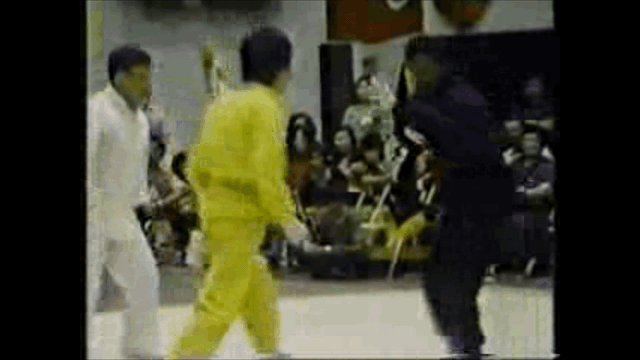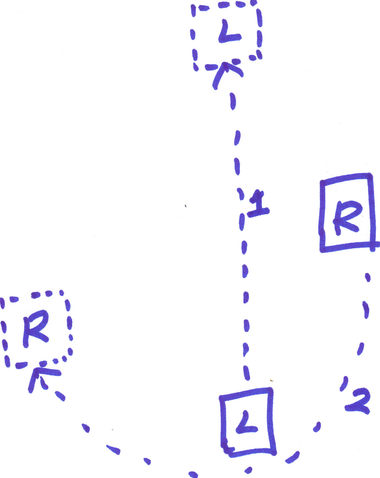They have movements in the form but they don't use it in chi sao, not originally anyway, I have seen many styles "Yipmanized" over the last few decades due to Yip Man's popularity. What those movements are used for I can't say because I really don't know anything about that style besides what can see on internet videos, perhaps someone who trained that style could give a proper explanation. Here are few first videos appeared in search.
Stories about "three heroes of Wing Chun" should be taken carefully because they came mainly from Yip Man's students and were later accepted by some other people in Foshan but people from Yuen Kai San lineage have different view of things, one of the Yuen Kai San's students said in an interview that Yip Man was Yuen Kai San's student, if I manage to find the video I will post it because I can't read Chinese and interview is in Chinese. Other sources from Yuen Kai San lineage state that Yuen and Yip families were friends but not Yuen Kai San and Yip Man , actually it was the opposite . Having in mind Chinese culture and especially Kung Fu culture , truth is usually extremely well hidden behind folk tales, hype and outright lies and takes a lot of patience and a lot of serious research to get small pieces of true events.
Yeah, that's how we have always seen it, Yip Man's father and Yuen Kay San's father it seems were on good terms, however it seems Yuen Kay San and Yip Man, perhaps not so much. Yuen Kay San taught Yip Man sticky hands reluctantly under pressure from both their fathers.




